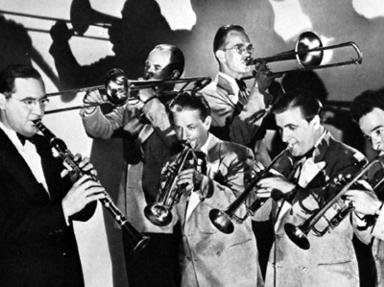Quiz Answer Key and Fun Facts
1. The first certified hit to come out of a Flo Ziegfeld show came out of his 'Follies of 1908'. It was to become one the most famous of the 'moon' songs typical of the period. The verse goes...'Little maid was kinda 'fraid of darkness
So she said, "I guess I'll go."
Boy began to sigh, looked up at the sky,
And told the moon his little tale of woe, oh,...'
What's the next line, and the name of this song?
2. Here is a song that lots of Americans now think of as a lullaby. It even shows up on a 1992 Bruce Springsteen album credited as 'Traditional', but it's not. It was written for the Ziegfeld show 'Miss Innocence' in 1908. The original chorus goes (in part):
'Marry me, carry me right away with you,
Giddy up, giddy up, giddy up, whoa!' What's the original title?
3. The second act of the 'Ziegfeld Follies of 1921' opened with Fanny Brice singing 'My Man'. Unlike her usual comic numbers, this was a real torch song that had already become a big hit in Europe. Fanny sang 'My Man' in English, but in what language was the song originally written?
4. In 1928 Flo Ziegfeld mounted a production that showcased one of his favorite stars, Eddie Cantor. Eddie wowed 'em with a title song that was all about a euphemism for, well, procreation. This song became the basis for a million parodies and a 1961 Pepsi jingle. What's missing? 'Makin'...'
5. The 'Ziegfeld Follies of 1909' (not 1908, but 1909) featured another 'moon' (not sun but moon) song. After the success of a 1908 'moon' song (not the poem, but the song), Ziegfeld decided to try for another moony hit (not flop but hit). What song am I talking about here?
6. In 1920 Flo Ziegfeld pulled a girl out of the chorus and showcased her talents in the musical 'Sally'. She turned out to be a triple threat - she could sing, dance and act and had oodles of charm to boot. When she clutched a dish cloth to her bosom and warbled...
'A heart, full of joy and gladness,
Will always banish sadness and strife.
So always look for the silver lining,
And try to find the sunny side of life...' there wasn't a dry eye in the house. Who was she?
7. Jerome Kern and Oscar Hammerstein staged the landmark 'Showboat' in 1927 with Florenz Ziegfeld as producer. Three songs that appeared in that show, however, were not originally written for it, but inserted by Kern and Hammerstein. Two of them were 'After the Ball' and 'Goodbye My Ladylove'; period songs that appear in the Trocadero scene. But there was another...a torch song that has become a standard independent of the show. What song is it?
8. The beautiful, sad Ruth Etting was a Ziegfeld star during the last half of the 1920s. In 1928 she appeared in a show singing a song that would become her signature. She pointed out that although nighttime was the right time for kissing, all she did at night was a lot of reminiscing. '...I'd rather be lonely than happy with somebody else.' What's the song?
9. The song probably most closely associated with Florenz Ziegfeld is, oddly enough, pretty terrible. It tells of a girl who 'starts up on a marathon and runs around your brain'. She sounds scary. What's the name of the song?
10. Although Florenz Ziegfeld died in 1932, another Ziegfeld Follies was mounted 1936, with songs by Vernon Duke and Ira Gershwin. It was a kind of revival, with stars from past Follies as well as newcomers. Among them was a young Bob Hope, who sang a song he always claimed put him on the map. Later, the song became Bunny Berigan's theme. What was it?
Source: Author
annaheldfan
This quiz was reviewed by FunTrivia editor
ertrum before going online.
Any errors found in FunTrivia content are routinely corrected through our feedback system.
